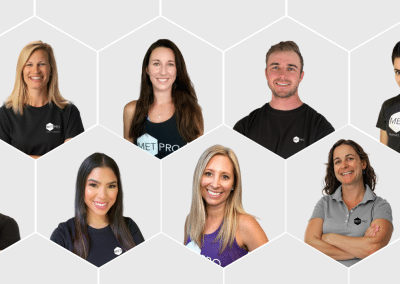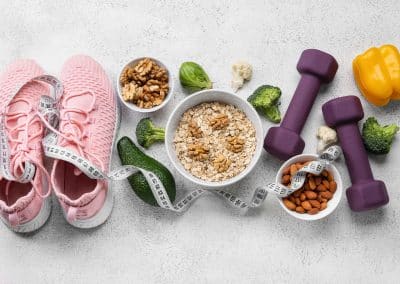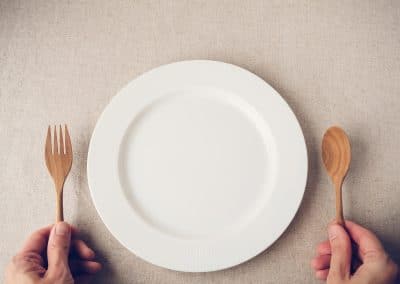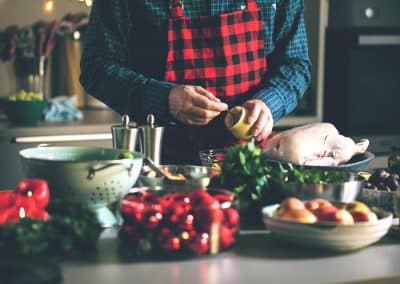Question:
Can you suggest the kind of foods that benefit training while also tricking the brain to avoid snacking on the wrong foods?
Answer From MetPro Coach Shannon:
A snack comprised of whole foods that include a source of all macronutrients (carbs, protein, and fat) is going to have the best benefit on training and satiety. A great example is a combination of a fresh fruit that has skin (such as apples) with nut butter and maybe some jerky. While it may seem simple, the fiber, protein, and fat make the snack more satisfying and will help extend the energy provided by the carbs. You won’t necessarily be tricking your brain, however, if you are fueling well enough throughout your whole day, those sweet/salty snack cravings won’t be as tempting.
Question:
Do you have any suggestions for healthy on-the-go snacks?
Answer From MetPro Coach Jan:
Here are a few things to keep in mind when trying to pick some healthy snacks for on the go:
Portability: You want something that will be easy to eat on-the-go & not messy!
Non-perishable: If you don’t need to refrigerate it, you’ll be able to stash these items in the car, at work, on your desk, etc. so you’ll have them readily available to you when you need them.
Balance: You also want to make sure you’ve got a good balance of protein, carbs, and fats so try choosing items that pair well together (apple + PB) or using compound foods (almonds, cheese) to help minimize the amount you need to bring with you!
Here are my top 3 on-the-go snack options I recommend to my clients:
Applesauce pouch (carbs) + Protein Shake (protein) + Walnuts (fat)
Rice cakes (carbs) + Almond Butter (protein + fat)
Small apple + Jerky or Tuna Pouch (protein) + Pecans (fat)
Question:
How do you avoid snacking after dinner? Do you eat dessert?
Answer From MetPro Coach Jan:
If you tend to go for that post-dinner snack or dessert most nights of the week, ask yourself a few questions:
-
“Am I eating balanced meals and snacks throughout the day?”
Make sure you’re choosing a protein, carbohydrate, and fat source with all of your meals and snacks. Not only will this help promote satiety, but the combination of nutrients will be digested more slowly, in turn helping to control blood sugar levels and prevent those spikes and drops that can lead to cravings later in the day. -
“Am I eating every 2-3 hours?”
Having a consistent meal schedule will help prevent you from getting too hungry later in the day when you’re more likely to snack. If you go hours without eating or wait until the very end of the day to eat, it will be more challenging to avoid the snacks after dinner. Try spacing your meals out during the day; place a snack between breakfast and lunch and another snack between lunch and dinner. -
“Am I genuinely hungry?”
Often times we find ourselves wanting to snack after dinner. Try to identify whether or not you’re actually hungry or if you’re snacking is due to boredom, stress, tiredness, emotional attachment, or just out of habit.
If you think you may just be snacking out of habit, try replacing your typical choice with chopped celery or cucumbers. If you’re genuinely still hungry, and trying to lose weight, stick with a snack that is comprised of protein and fat. A couple of great options are: ½ a cup of cottage cheese + 1 oz walnuts or a scoop of protein blended with almond milk and peanut butter.





